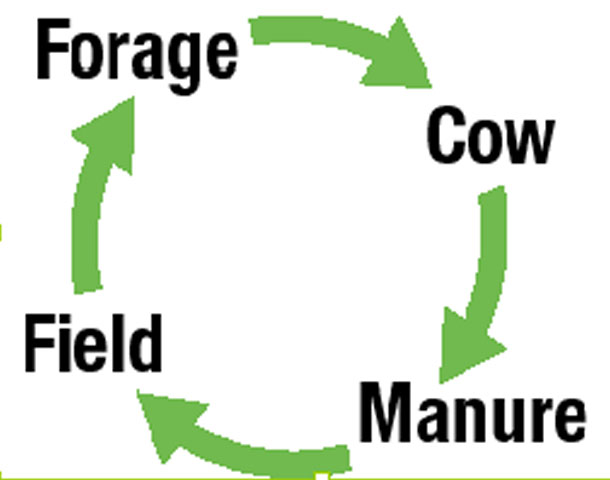Chances are, you don’t spend a lot of your day thinking about the various bacterial or other microscopic species that inhabit your dairy. And much of the time, these unseen organisms don’t affect your herd to a point that warrants your attention.
But that doesn’t mean clostridia and a myriad of other unseen entities aren’t present or are busy influencing the world around them. It simply means they are currently (seemingly) coexisting with you and your animals. For now.
It’s a complicated picture.
Unseen residents
Clostridia bacteria are normal inhabitants of the soil and livestock environments; no area of the country and no farm is exempt. Further, some species are pathogenic, while others are not. And yet other species may cause undesirable performance effects.
Animals constantly ingest low levels of clostridia because of its widespread, underlying presence.
As bacterial loads rise, animals become increasingly vulnerable to high-stress events, creating a tipping point for disease and performance deficiencies. It’s when this tipping point occurs clostridial coexistence no longer works.
According to experts at the University of Wisconsin, clostridial diseases are usually sporadic on most dairies; a cluster of cases can occur over a relatively short period of time. Other farms seem to struggle with continuous problems either in cows or milk-fed calves. In general, clostridial diseases are sudden in onset, fulminating in severity, and the first sign of illness may be death.
It’s easy to get lulled into disregarding the significance of clostridia and other microbes given that diseases can be difficult to diagnose and often occur sporadically. Dairies may not realize they have a potential issue lurking below the surface.
Nowhere to hide
If you had to guess the clostridia prevalence on your farm, what would you say? 25 percent? 50 percent?
It’s much, much higher. More than 99 percent of all bovine manure samples analyzed at our lab tested positive for clostridia. And 83.5 percent of samples from cows and 69.5 percent of samples from calves tested positive for pathogenic Clostridium perfringens.
Across the U.S., more than 69,000 different clostridial isolates, or strains, have been harvested from thousands of dairy fecal and feed samples.
- About half of these isolates (53.9 percent) make up a well-known toxigenic species, Clostridium perfringens, which can negatively impact gut health and lead to serious digestive issues such as hemorrhagic bowel syndrome.
- The other isolates (46.1 percent) include clostridium that produce metabolic end products with a negative impact on rumen efficiency. Instances of “off-feed” cows or stomach upsets can often be tied to these secondary effects of clostridia.
The samples were collected from across the U.S. and organized into regions defined by geography and prevailing farm management styles. This created a clear picture of clostridial population diversity in specific regions. The results also indicate both the species of clostridia and the level of diversity differ across regions sampled.

In some cases, a sampled farm was very aware of a clostridial problem prior to testing, having struggled with hemorrhagic bowel syndrome and other negative effects caused by clostridia, but didn’t know why the issue existed or how to reduce the consequences.
In other circumstances, the presence of clostridia was unknown, but the farm wrestled with digestive upsets and other subclinical health issues and inefficient rumination that lowered animal productivity.
Unique solutions
The robust farm sampling and analysis program undertaken has helped provide a non-antimicrobial solution for combating clostridia on a regional and individual farm basis.
Interestingly, it uses microbes to defeat microbes. Bacillus have coexisted with clostridia in the soil for eons and are their natural enemies; long-term use results in changes to clostridial population levels and species diversity.
Utilizing the clostridia sensitivity profiles developing through the testing program, researchers have identified several specific combinations of proprietary strains of bacillus bacteria that inhibit both toxigenic and non-toxigenic clostridium in different U.S. regions.
To implement these microbial solutions:
- Samples are gathered and analyzed to assess bacterial challenges throughout the farm.
- Results are used to determine which strain or strains of beneficial bacillus strains will best address the harmful organisms found. In some instances, the best course of action is a regional blend. In others, it’s a single strain.
- Individualized solutions, known as targeted microbial solutions, are developed based on analysis results that address specific challenges on the sampled farm.
- Continuous service and follow-up monitoring are employed to facilitate long-term success.
Outcome monitoring
Dairies have learned several important lessons from this process:
- Clostridial populations and diversity vary across the country and across the globe. Different combinations of bacillus are necessary to address clostridial challenges specific to each region.
- Feeding specific bacillus based on robust sampling over the long term results in changes to the microbial terroir, or microbial makeup, of a farm. It’s not about eliminating the bacteria that live on your farm. It’s about shifting populations away from those that cause harm.
Ultimately, we’ve learned these targeted microbial solutions convincingly help change the pathogen profile of a farm, lower harmful bacterial loads of animal gastrointestinal tracts and enhance animal health and performance.
Following diagnostic testing and microbial interventions, participating dairy farms report incidence of hemorrhagic bowel syndrome and digestive upsets dropping significantly. A pretty remarkable change due to something you can’t even see. ![]()
References omitted but are available upon request. Click here to email.

-
Thomas Rehberger
- Director of Innovation and Product Development
- Arm & Hammer
What’s your farm’s microbial terroir?
Much of the individual farm challenges with clostridia and other animal health and performance issues due to microscopic populations can be attributed to a specific location’s microbial terroir.
It’s loosely translated as “a sense of place,” which is the sum of the effects of a local environment on the characteristics of a product – in this case, your dairy. Your dairy’s microbial terroir includes the environment, soil, animals and weather for a specific farm location.
It’s what makes each individual farm different from its neighbor and why some health challenges occur more often or are more difficult to address on one farm versus another, even though management and conditions seem similar.
Commonly used in the wine and cheese industries, microbial terroir is what makes a wine or cheese from one location unique versus anywhere else in the world.





